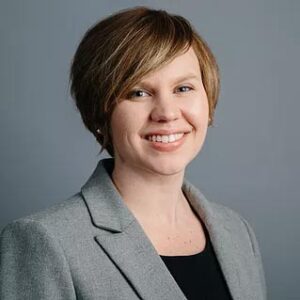In 2021, I put out the call for subscribers to ask specific questions they were dealing with. We got some GREAT questions. We made the same call for questions next week and I can’t wait to dive into some of the questions we received in future blog posts.
I thought I would revisit one of the original subscriber questions we received last year as I believe it still remains timely.
[NOTE: There have been some edits made to the questions to ensure anonymity.]
Q: I’m finding it somewhat difficult to get into genuine conversations with new clients. [They] are guarded, burnt out, or just plain frustrated with today’s market, and really aren’t open to what I have to pose to them.
How would you suggest I approach them?
Answer: Getting into genuine conversations AND dealing with burnout are two very hot topics in my world right now.
I believe all the changes we have seen since 2020 have made meaningful conversations challenging. Even though we are for the most part returning to “normal” after COVID, we have been operating differently for a prolonged period of time. From moving to virtual meetings, to relying on asynchronous communication (such as Slack and email), the way we communicate was turned on its head.
I read a recent statistic that only 50% of communication is fully understood. That’s a lot of space for misunderstanding. The emotionally charged nature of the world has only made that understanding more difficult.
This is where burnout comes in.
I believe this is the new frontier of skills. Not only managing your own burnout, but using emotion and empathy to properly confront burnout in others.
Businesses should be teaching about emotional intelligence and actively managing it.
So let’s get back to your question – how to deal with situations where you are having to communicate with those that are highly stressed, potentially burned out, and may be difficult to connect with. In my years of practice, these have been the most effective strategies:
— Start with empathy. We’ve all been through a lot in the past year. We are collectively trying to re-establish how to get things done, and no one has been untouched by change. Individuals that may have been quick to respond in the past may now be more closed off and stretched thin. Having empathy for their unique position is a posture change and helps you to consider the individual.
— Dare to wade into the forest of ambiguity. Brene Brown is one of my favorite authors. In her book “Dare to Lead” she talks about how the road to true leadership is lonely, and can often be like wandering in the wilderness. With the highly personalized nature of dealing with individuals, there may not be a standard process or path you will consistently follow. This is emotionally taxing [more on that in a moment]. Be willing to wade into ambiguity, even if it is uncomfortable.
—Care for yourself. Ok, this may sound like woo woo advice, but follow along with me here. We often hear the word self-care and tune out. BUT the world we have all lived in during the past year has been emotionally draining and difficult. We all want to return to “normal” but the residual effects of the experience we have collectively had are still around. It can be frustrating when you continue to experience roadblocks. Be in touch with what energizes you. If it was those client conversations, and they are still happening, can you connect in some other way? Can you connect with a peer or mentor? Do you have current or former colleagues you can spend time with to potentially learn more about what they are going through? Understand what “fills your tank” and make sure you are managing your energy effectively.
We are emotional beings – we can’t check our brain at the door when it comes to work. That being said, we need to understand that we are dealing with coworkers and clients who are also emotional beings.
Emotional intelligence and mindfulness is the new frontier when it comes to workplace education, and I look forward to seeing all the advances in the months and years to come.





